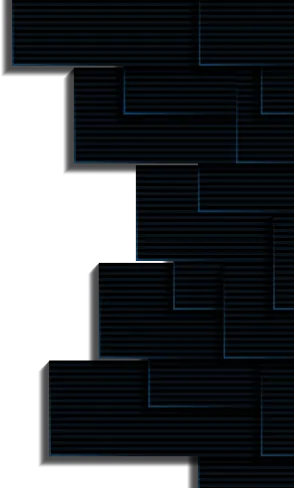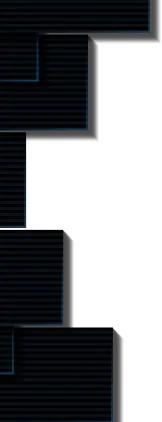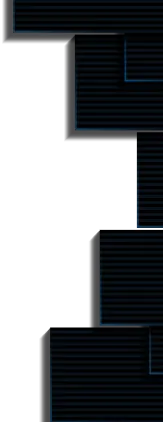Gnosis, a new DeFi facilitation mechanism!
Author: Sidharth

Founded in 2015 by Martin Köppelmann and Stefan George, Gnosis is a part of Consensys, the world's top Ethereum venture production company.
Gnosis was the first team to launch a live Ethereum application in 2016, and now the company has three leading decentralized, open-source product lines (conditional tokens for prediction markets, Gnosis Protocol (DEX), and Gnosis Safe Multisig) to let you securely create, trade, and hold digital assets.
Gnosis simply aims to build a new market mechanism to facilitate DeFi, providing an infrastructure for Dapps to help with funds and asset management, forecasting, and act as a source of details for prediction markets. It aims to create a reliable tool for finance and other sectors' decision-makers via its DAO. It uses two cryptocurrencies, GNO and OWL, to ensure that its transactions are secure and dispersed.
For the past 12 months, here are the details regarding the total value locked in Gnosis:

GNO Token
GNO is an Ethereum-based ERC-20 token sold during the Gnosis ICO. Polls are held in the GnosisDAO Snapshot area to determine the fate of a proposal, and you must have at least one GNO to participate in these.
OWL tokens
The ERC-20 token, OWL, can only be generated by locking GNO. Tokens when locked, prevents them from being transferred for a set period. They are unlocked and ready for transactions after the fixed period ends.
In 2018, Gnosis hosted the inaugural OWL Generation Event, allowing users to lock their GNO to get OWL.
OWL tokens are utilized to pay fees on the Gnosis prediction market platform. Every OWL token is worth $1 because it is pegged to the US currency.
Here are its use cases:
- Funding markets on Omen: Omen is a decentralized prediction market platform. With a single transaction on Omen using OWL, you can fund a prediction market.
- Pay fees on Gnosis protocol: The protocol charges a 0.1 percent fee on each executed deal based on trading volume. Fees are paid in sell tokens and included in a trader's limit price. After that, all fees are converted to OWL. The fee is split in half and paid to the chosen order settlement service, with the remaining half being burned.
- Pay Ethereum transaction costs on Gnosis Safe: On the Gnosis Safe app, users can pay all transaction fees in OWL.
Conditional Tokens
The conditional tokens system, which supports decentralized prediction markets like the Omen platform, was created by Gnosis.
Conditional tokens are a new type of digital asset based on events.
The conditional tokens architecture creates event-based digital assets, allowing the value of a digital asset to be linked to an event's conclusion.
- A new standard: The conditional tokens framework establishes a new standard for event-based digital assets, with applications ranging from prediction markets to conditional bounty payments.
- Oracle Agnostic: The conditional tokens system is oracle agonistic, which means that users can pick which information sources to employ when reporting an event's outcome.
Gnosis Protocol
The Gnosis Protocol is a permissionless DEX that has been in development for some time and allows ring trades to maximize liquidity. Instead of a single token pair, ring trades use order settlements to distribute liquidity across all orders.
Here is the data regarding the sell volume, the batch size and the trades for the Gnosis protocol:

Benefits of Gnosis Protocol
- Anyone can list tokens on this permission-less DEX.
- Ring trades to share liquidity across all traded assets.
- Batch auctions were the first to be implemented, fostering fairer, uniform settlement prices.
- Trade any token pair without the need for an intermediary token or centralized trading system.
Gnosis Protocol supports the coincidence of Wants:
The protocol supports trader coincidence of wants, which means that if two traders each have an asset that the other desires, a trade can be settled directly between them without using an external market maker or liquidity provider.
Trades on Gnosis Protocol
Although any ERC-20 token is technically compatible with the protocol, only the tokens mentioned on the protocol can be traded. To list new tokens, a spam prevention fee of 10 OWL is necessary.
A user can place an order for one token in exchange for another on the Gnosis Protocol. The protocol charges a fee of 0.1% of the volume of an accomplished trade.
Here is the total value locked in Gnosis protocol and the overall statistic for the past year regarding the same:

Gnosis Protocol's trading cycles
- Limit sell orders can be placed on-chain at any moment by users.
- A batch auction takes place every 5 minutes.
- All presently open orders on the protocol are considered at the commencement of an auction.
- There is an open competition for solvers to submit order settlement solutions for each auction.
- The protocol chooses a ring trade order settlement mechanism that maximizes trader welfare and provides single clearing pricing.
- All matched orders are negotiated and filled on-chain.
- The next batch auction starts.
Here is a brief overview of the Gnosis protocol’s trading cycle:

Solvers in Gnosis Protocol
Anyone can become a solver by submitting an order settlement proposal; however, significant technical and computational capability is required for profits.
The protocol chooses the solver that delivers the best order settlement solution for a given batch auction. The order settlement is subsequently completed on-chain, partially executing all matched trades.
Following that, users can withdraw funds from both filled and unfilled orders.
Mesa
Mesa is the first Gnosis Protocol-based dapp. Mesa is a universal trading interface for stablecoins that allows simple market-making strategies. The dxDAO launched Mesa.
Here is how you use the Mesa application for trades:

Gnosis Auction
Gnosis Auction is a platform that allows token price discovery through fair, transparent, and decentralized batch auctions.
The platform, which is run by GnosisDAO and created by Gnosis, gives teams a secure way to allow their community and market forces to determine a token's worth.
Gnosis Auction enables everyone to participate in batch auctions and strives to create a reliable and simple-to-use solution that allows anybody to auction ERC-20 tokens.
Benefits of Gnosis Auction
- Front running (MEV) resistant: Gnosis Auction inhibits front running bots from extracting value by preventing them from purchasing tokens early and selling them later at a higher price.
- User-friendly bidding experience: Gnosis Auction provides a user-friendly bidding experience, allowing bidders to join at their leisure rather than having to plan their actions to acquire the desired price.
- Full control over participation price: One of the benefits of Gnosis Auction is the opportunity for bidders to set a price restriction on how much they are ready to pay.
- Fair pricing: All bidders will get the same clearing price after the auction.
- Order Settlement: Auctions can resolve more than 10,000 bid orders with the same settlement price.
- Permission-less: Auctions can be used without the need for prior approval.
- Gnosis Auction is based on previous blockchain-based auction technologies that have proven successful.
Batch and a Batch ID
Orders placed on the Gnosis Protocol are not instantly performed but are collected and aggregated in batches before settling. These batch order settlements take place every 5 minutes. A batch ID is assigned to each batch.
Batch Auctions
Batch auctions are a tried-and-true pricing procedure used in traditional finance. Gnosis Auction's mechanism offers a few significant advantages over existing Ethereum-based techniques. The protocol settles orders in small batches that are limited only by the size of the gas block. Each batch has consistent clearing pricing, which implies all orders in that batch receive assets at the same price as other orders.
Working of Gnosis Auction:
- Visit the Gnosis Auction platform.

2. Select a featured auction out of the visible ones.
3. Connect to the concerned crypto network and then add the amount details to place an order.

Gnosis Safe
Most Ethereum users are accustomed to using a single key wallet, also known as an Externally Owned Account (EOA). These are protected by a private key, which the user can turn into a 12-word "seed phrase." The funds can be taken if the private key is compromised in any way.
This is where the Multisig comes in. Gnosis Safe is an Ethereum-based smart contract wallet requiring a minimum number of persons to approve a transfer before it can take place (M out of N). Suppose your organization has three main stakeholders, then you can set up the wallet to demand consent from all three people before sending a transaction. This ensures that any single person cannot compromise any funds and assets.

Furthermore, Gnosis Safe provides you with complete control over your assets. There's no fear of a bank causing you problems because you're running a crypto business, and the smart contract you're using is entirely trustworthy and under your control.
Gnosis Safe is the most secure Ethereum platform for managing digital assets.
Here is the data of the number of safes created and the overall safe transactions:

Benefits:
- Multi-signature: Users can completely configure how they or their team manages crypto assets, requiring a certain amount of signatures to confirm transactions.
- Maximum Security: While the code is routinely reviewed, the Gnosis Safe smart contracts have been publicly confirmed.
- Safe Apps: Users can now use Safe Apps to invest in DeFi technologies directly from the platform. Invest, earn, borrow, invoice, do payroll, and more with your digital assets.
Creating a Safe
It only takes 60 seconds to create a Gnosis Safe account. To get started, here's a walkthrough:
- To begin, go to https://gnosis-safe.io/app/ and start the web app.
- Connect a wallet: You must first connect a signer wallet to build a Gnosis Safe account. Ensure you have some Ethereum in your wallet because the Safe deployment will incur transaction costs.

- Choose a name: After you've chosen a wallet, click "Create New Safe" to begin the process of configuring your Safe. You'll need to give your new Safe a name first. This name is only saved on your system and is never exchanged with Gnosis or anyone else.

- Choose signers: This is crucial since it determines whose addresses have access to request and approve transactions. Your associated signer wallet is already suggested as the very first signer, and you can change it if you want.

- Define the confirmation threshold: The final stage is to decide how many signer approvals a transaction or any account setting modification is required before it is authorized. You won't get to reclaim your assets if you don't have enough signers to meet the criteria.
- Review and deploy Safe: Once you've gone over all of the criteria, you can submit your Gnosis Safe account creation and follow the on-screen instructions to complete the process.
Choosing the Safe Setup
There are usually three choices to make when setting up a Gnosis Safe:
- What is the total number of owners?
- What is the threshold?
- Which wallets should be used by the owners?
There is no single best response to these three issues; therefore, there is no best Gnosis Safe setup. It is entirely dependent on the use case in question.
- What is the total number of owners? It's generally a good idea to have multiple owner accounts. Even while managing funds as an individual, it is advisable to have multiple owner accounts to have multiple authentication factors.
- What is the threshold? It's best to set a higher threshold than 1 so that no single account can conduct transactions, and at least one more account is always necessary to validate and execute Safe transactions. As a result, even if an attacker gains access to one account, they will be unable to transfer cash. Aside from that, it's a good idea to set a lower threshold than the total population that owns your Safe. As a result, even if one owner loses their access, other users are not locked out of all their funds in the Safe, and the other owners can still make transactions.
- Which wallets should be used by the owners? This is dependent on the owner wallets you may already be utilizing. Metamask, hardware wallets like Ledger or Trezor, and mobile wallets that use WalletConnect, including Trust, Argent, or Rainbow wallet, are all compatible with the Safe.
Safe creation cost
Several factors determine the final Ethereum transaction fee required to create a Gnosis Safe:
- The cost of gasoline
- The total number of owners.
- The ProxyFactory used.
- Set of additional logic.
The values below imply you build a Gnosis Safe using the web interface at https://gnosis-safe.io/app/:
- 263k gas is required for a Gnosis Safe with two owners.
- 309k gas is necessary for a Gnosis Safe with three owners.
- A Gnosis Safe with four owners uses approximately 331k gas.
Gnosis DAO
GnosisDAO uses Gnosis products to make choices on the development, support, and governance of its token ecosystem openly and transparently.
The final round of the GnosisDAO governance process invites recommendations for a signaling method based on GNO Tokens.
Polls are held in the GnosisDAO Snapshot area to determine the fate of a proposal. To participate in a GnosisDAO Snapshot poll, you must have at least one GNO.
Governance
For any proposal to pass the governance process of Gnosis DAO, it must pass through the following phases:
1.Ideation Phase –
This phase allows for an initial, informal discussion on the Gnosis Forum on potential GnosisDAO proposals. By publishing your concept in the GnosisDAO category 83 with the phase-1 tag, you can start a proposal in Phase 1. This stage allows proposals to obtain feedback from the public before launching a formal poll.

There are no explicit requirements for projects to advance from Phase 1 to Phase 2. However, if a community debate of a Phase 1 proposal fails to gain traction, it is unlikely to be successful.
2.Specification Phase –
During this period, proposals must be posted in GnosisDAO category 83 using the Gnosis Improvement Proposal (GIP) template.

You can easily make a GIP by adding the GIP subcategory to your drafts post, following which a GIP template will be immediately produced for you to fill out. You can further move a proposal to Phase 2 by adding the phase-2 tag to the GIP-#.

According to the GIP framework, all proposals must address relevant fields, including a Simple Summary, Specification, Abstract, Motivation, and Implementation. In addition to these elements, Phase 2 proposals must include a 5-day forum poll on the proposal's conclusion, as well as the option to submit a proposal anonymously.
3.Consensus Phase –
For token holders, this phase enables ideas for two signaling modalities. You can advance a proposal to Phase 3 by upgrading the proposal's tag to phase-3 and modifying the GIP post from the previous stage to reflect the forum poll result that obtained a relative majority of votes. This helps to fine-tune the proposal in preparation for the final step.
A GnosisDAO Snapshot 48 poll with the proposal and a link to the GIP post on the Gnosis Forum must be made, including the choice. There must be no alterations, and it must last at least seven days. Members of the community must have at least one GNO to vote in the poll.

The GIP post must include a link to the related GnosisDAO Snapshot poll.
For proposals to get accepted in the final phase after first publishing, there had to be one outcome with a relative GNO majority utilized for signaling on the GnosisDAO Snapshot poll, as well as a quorum of at least 10% of the circulating supply of GNO. Following the success of GnosisDAO proposal 9, the quorum requirement adjusts to a yes-voting quorum of at least 4%.





Subscribe to receive Alpha!
Join 4.3k subscribers from renowned companies worldwide and get a weekly update in your inbox. Stay updated on the latest and finest projects and product updates.

